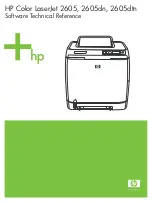
66
Alt (alternating voice) sources
These output a different value for each alternating voice played via the same note on the keyboard. This allows you to
enliven parts containing sequential notes of the same pitch by varying parameters for each.
• Alt1
+
-
Alternating source per key-on: -1, 1, -1, 1...
• Alt1+
As above but positive only: 0, 1, 0, 1...
• Alt2
+
-
Alternating source per key-on: -1, 0, 1, -1, 0, 1...
• Alt2+
As above but positive only: 0, 0.5, 1, 0, 0.5, 1...
Voice and unison sources
Voice and unison sources allow you to set up polyphonic modulation effects that vary according to the number of active
voices. Active voice counts are converted into a set of values from -1 to 1 (bi-polar) and 0 to 1(uni-polar) which can be
used to modulate parameters. Each source is provided in 2 different varieties of value distribution between the minimum
and maximum. The Unison sources allow any parameter to be varied across unison voices – not just the pitch detuning
found in classic synths.
See section 7:6 for more details of these sources.
Unison sources
These sources are used in conjunction with polyphonic Unison voices. Unison modulation sources proportionally distribute
values within a range for each operational unison voice.
Modulating the Pan control with this source produces a rich stereo spread of unison voices.
• Unison1
+
-
Each active unison voice outputs a value proportionally distributed between -1 and 1
This source is especially suited to panning voices across the stereo field.
•
As above, but uni-polar
• Unison2
+
-
As Unison1 but distributed in a different order
This distribution can be more suitable for unison detuning with osc pitch modulation.
•
As above, but uni-polar
Voice sources
These sources spread values proportionally within a range for each active voice, when using multiple voices with or
without unison.
• Voice1
+
-
Each active voice generates a value proportionally distributed between -1 and 1
•
As above but uni-polar
• Voice2
+
-
As Voice1 but distributed in a different order
•
As above but uni-polar
Random source sub-menu
The TransMod system contains a range of polyphonic random modulation sources of various types, from simple noise
sources to more specific ways of generating random values.
• Noise1
+
-
Fast-varying white noise random value
•
As above, but uni-polar
• Noise2
+
-
Fast-varying pink noise random value
•
As above, but uni-polar
• Rand1
+
-
A single random value for all destination parameters, generated by key-on sample-and-hold
on white noise
• Rand1+
As above but uni-polar
• Rand2
+
-
A single random value for all destination parameters, generated by key-on sample-and-hold
on pink noise
• Rand2+
As above but uni-polar
• MRand1
+
-
Individual random values for all destination parameters (multiple random values), generated
by key-on sample-and-hold on white noise
This source is useful for modulating each note differently, especially when using the ‘Load
to Mod slot’ function for loading presets as modulation depths.
•
As above but uni-polar
Содержание DCAM SYNTH SQUAD
Страница 1: ......
Страница 2: ......
Страница 26: ...26 Shaper Filter Amp sections...
Страница 109: ......
Страница 110: ......
















































